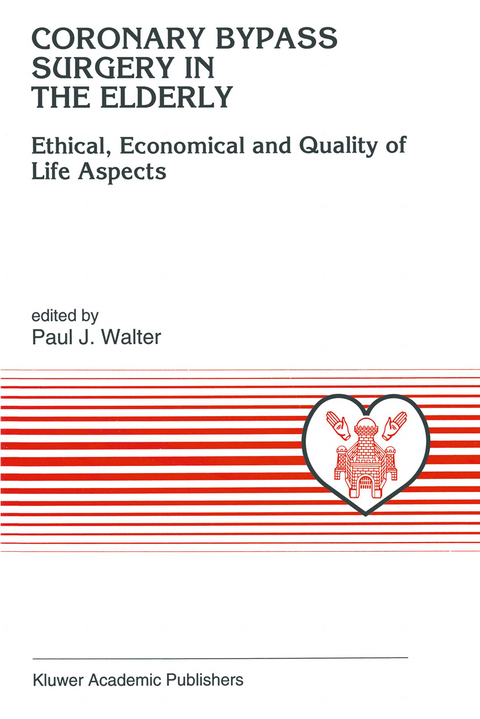
Coronary Bypass Surgery in the Elderly
Springer (Verlag)
978-94-010-4093-8 (ISBN)
One: Demographics and health policy.- 1. Demographic and economic trends in Europe and the need for coronary bypass surgery.- 2. Do growing proportions of elderly mean more cardiovascular diseases?.- Two: Favourable clinical results of CABG in the elderly.- 3. Isolated CABG in the elderly: Operative results and risk factors over the past three decades.- 4. Combined valve and coronary bypass surgery in the elderly.- 5. Cardiac surgery in the octogenarians: Perioperative results and clinical follow-up.- 6. Coronary artery bypass grafting and use of the LIMA in octogenarians.- Three: Health care costs of elderly CABG patients.- 7. Age-specific costs of heart surgery and follow-up treatment in Germany.- Four: Clinical, economical and ethical controversies.- 8. Opportunities to improve the cost-effectiveness of CABG surgery.- 9. Who gets bypass surgery — should the doctor, patient or computer decide?.- 10. The economics of treatment choice. Making choices in coronary bypass surgery in the elderly.- 11. The role of age and life expectancy in prioritising health care.- 12. When does the cost of living exceed the return on our investment? The social and economic consequences of coronary bypass surgery in the elderly.- Five: The heart of the matter: Health-related quality of life after CABG in the elderly.- 13. Coronary artery bypass surgery and health-related quality of life: Data from the National Health and Nutrition Examination Survey.- 14. The selection of health-related quality of life measures for older adults with cardiovascular disease.- 15. Survival and health-related quality of life of elderly patients undergoing cardiac surgery.- 16. Health-related quality of life after coronary revascularization in older patients.- 17. Longitudinal health-related quality of lifeassessment in five years after coronary artery bypass surgery — does benefit continue with advancing age?.- 18. Health-related quality of life five years after coronary bypass surgery at age 75 or above: A research approach to item selection.- Six: Rehabilitation.- 19. Rehabilitation following coronary artery bypass graft surgery at elderly age.- Discussions.
| Reihe/Serie | Developments in Cardiovascular Medicine ; 161 |
|---|---|
| Zusatzinfo | XX, 268 p. |
| Verlagsort | Dordrecht |
| Sprache | englisch |
| Maße | 160 x 240 mm |
| Themenwelt | Medizinische Fachgebiete ► Chirurgie ► Herz- / Thorax- / Gefäßchirurgie |
| Medizin / Pharmazie ► Medizinische Fachgebiete ► Geriatrie | |
| Medizinische Fachgebiete ► Innere Medizin ► Kardiologie / Angiologie | |
| Studium ► Querschnittsbereiche ► Prävention / Gesundheitsförderung | |
| ISBN-10 | 94-010-4093-1 / 9401040931 |
| ISBN-13 | 978-94-010-4093-8 / 9789401040938 |
| Zustand | Neuware |
| Haben Sie eine Frage zum Produkt? |
aus dem Bereich


